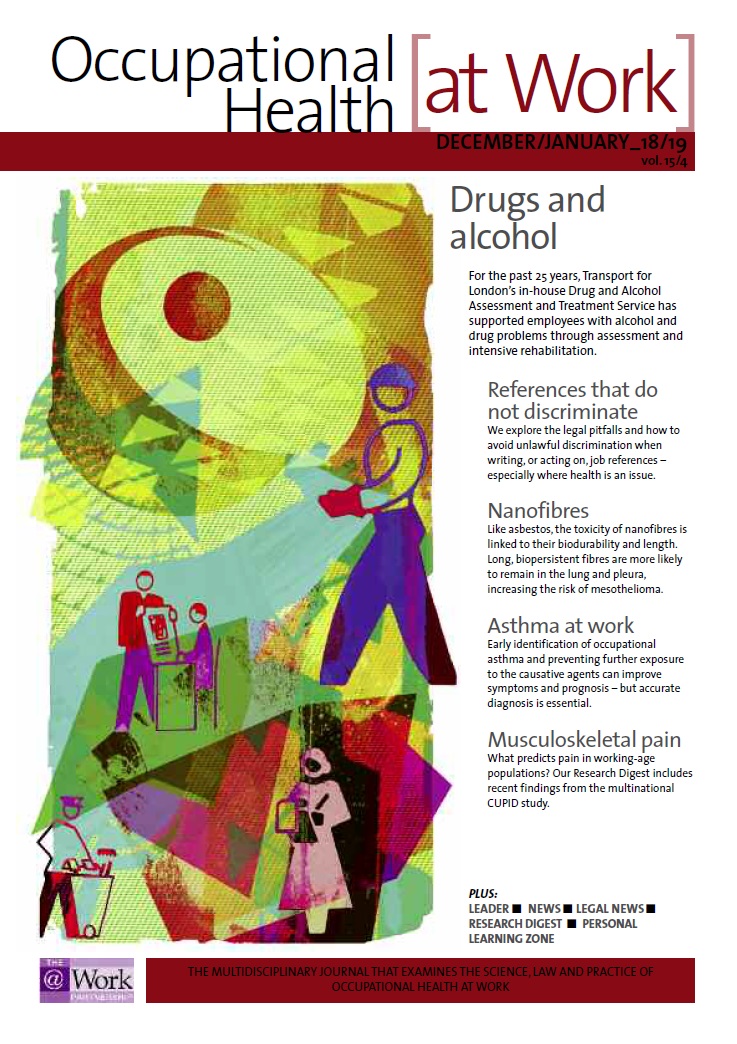December/January 2018/2019 (vol. 15/4)
ContentsFeaturesNewsLegal
NewsResearch DigestResearch PlusCPD
 What makes a fibre hazardous to health?
What makes a fibre hazardous to health?
The asbestos origins of the fibre length threshold and its verification with nanotechnology
Summary:
Fibre dimensions are critical in determining whether or not a durable fibre presents a significant risk to health in terms of causing mesothelioma. Craig Poland, Anja Schinwald, Rodger Duffin, Ken Donaldson and John Cherrie explain.
Fibres such as asbestos have long been known to cause a litany of occupational diseases and are tightly regulated. Exposure limits are based on fibre number rather than mass, reflecting the critical role that dimension plays in toxicity and, in particular, the generation of mesothelioma. The definition of a fibre has, at its heart, minimum and maximum dimensions, which determine if an elongate particle is considered as a fibre or not. Whilst the maximal diameter of 3 μm has its basis in respirability, the case for a minimum length of 5 μm is shrouded in uncertainty…
Dr Craig Poland (senior research fellow), Dr Rodger Duffin (reader in respiratory medicine), Dr Anja Schinwald (research fellow) and emeritus professor Ken Donaldson are researchers at the ELEGI Colt Laboratory, University of Edinburgh, Centre for Inflammation Research. Professor John Cherrie is professor of human health at Heriot Watt University’s Institute of Biological Chemistry, Biophysics and Bioengineering and principal scientist at the Institute of Occupational Medicine, Edinburgh.
Author: Poland C, Duffin R, Schinwald A, Donaldson K, Cherrie J
Occupational Health at Work December/January 2018/2019 (vol. 15/4) pp21-26



